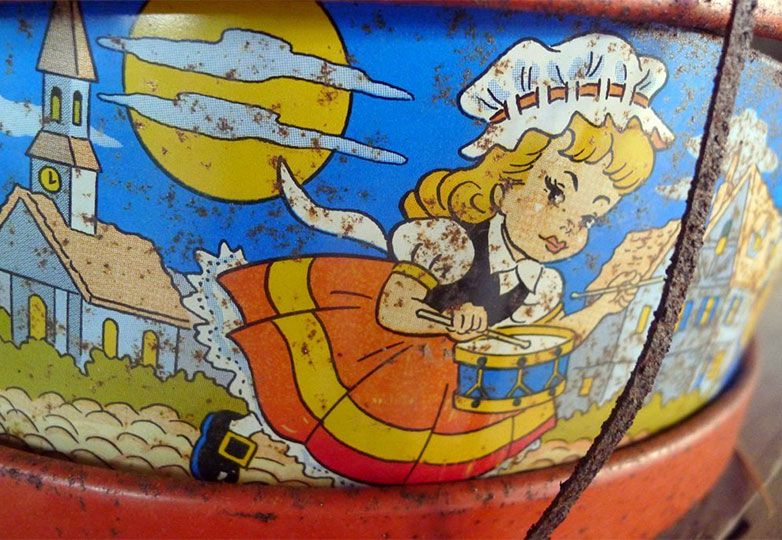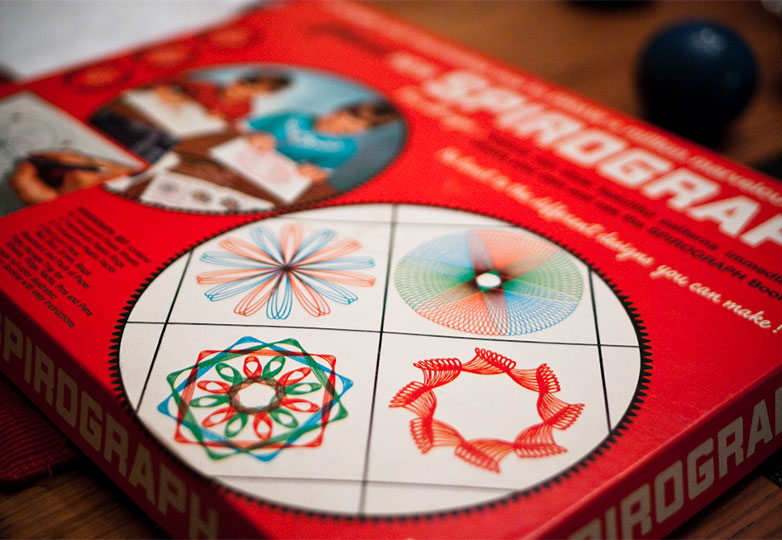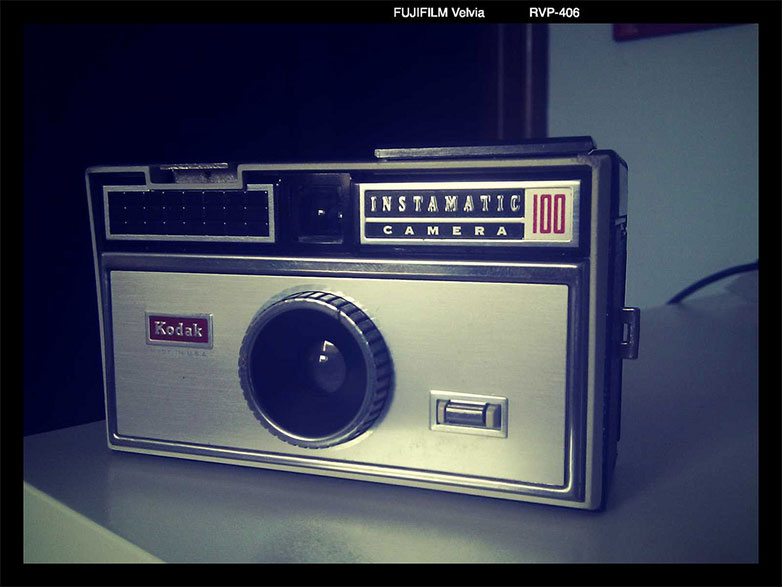
 Nostalgia is very common in the world of web design. We see it in varying degrees in vintage and retro styled websites, as well as in small touches on otherwise-modern designs.
Nostalgia is very common in the world of web design. We see it in varying degrees in vintage and retro styled websites, as well as in small touches on otherwise-modern designs.
A lot of designers likely give very little thought to why they might design a site with a nostalgic feel. They simply like the style, or feel like it's the correct choice for the particular project. But they may not think about the psychological reasoning behind that choice.
A better understanding of why certain design elements and conventions have the effect they have, and how to best use those effects, can make us better designers. The end result being that our projects are more successful and our clients are happier.
Nostalgia as a medical condition?
The term "nostalgia" was invented by a medical student, Johanne Hofer, in his Basel dissertation in 1688. It was described as the anxiety felt by Swiss mercenaries fighting in the lowlands of France and Italy, away from their native mountain homes. Some military doctors believed the condition was particular to the Swiss, and was caused by the racket of cowbells back home. Other theories to the cause of nostalgia included changes in atmospheric pressure or little demons living in the sufferer's head.
Nostalgia was equated with homesickness at that time, and was a form of melancholy. The Kuhreihen, simple melodies played on the horn by Swiss Alpine herdsmen, was banned among Swiss mercenaries, because it created such a sense of nostalgia that it led the men to the point of illness, desertion, or death.
Symptoms of nostalgia included fainting, high fever, stomach pain, indigestion, and death in some cases. Anorexia, increased and irregular heartbeat, and weeping were also symptoms.
Even into the 20th century, nostalgia was still considered to be a psychiatric disorder. It was linked to insomnia, depression, and anxiety. Only recently have the positive aspects of nostalgia begun to be studied.
The positive aspects of nostalgia
More recent research suggests that nostalgia can actually promote psychological health. It can lead to higher self-esteem and positive feelings. It can also result in a feeling of being protected and loved by others. It can even help to counteract loneliness (loneliness can also trigger nostalgic feelings).
It's these feelings you want to tap into as a designer. You want those viewing the sites you design to have positive, comfortable feelings. Learning to optimize how you provoke those feelings will make you a more effective designer.
When should you use nostalgia?
While nostalgia can be a very positive force in design, it's not appropriate for every situation. Tapping into nostalgic feelings in your visitors has a very specific effect, which we've already discussed. If your site needs to evoke forward-thinking feelings, then nostalgia is likely not going to work in your favor (or at least not as well as other tactics could).
But if you want your visitors to get that warm and fuzzy feeling they get when looking at things like childhood photographs, then nostalgic design touches might be perfect.
The role of emotions in branding
We all know that emotional connections are intrinsic to creating a positive brand association. Evoking feelings in your visitors and potential customers has a direct impact on how they view your brand and your site.
But evoking an emotional response can be tricky. What has positive associations for one might have very negative associations for another. And as a designer, you have no real way of knowing what reaction each individual visitor to your site might have. But you can work with generalizations and hopefully appeal to a majority of your visitors.
Things most likely to evoke emotions
Holidays can evoke very strong nostalgic feelings. Virtually everyone has vivid holiday memories from childhood. Things like Santa Claus, the Easter Bunny, Krampus (who is well-known in Austria and surrounding countries, but has been gaining recognition in other areas in recent years) and similar characters associated with specific holidays can evoke very powerful memories and associated feelings.
Music is another major nostalgia-inducer. The music we grew up with, or that have been included in particular events in our lives, can immediately evoke specific feelings. Unfortunately, including music on a website is a big design no-no.
Other common evokers of nostalgia include cars, movies, and TV (including advertising—how many of us get whimsical when seeing an advertisement for a favorite product from childhood?). Again, these are things that generally play prominent roles in our youth, so it's no wonder we have strong ties to them. They were probably paramount in shaping our taste and sense of style.
Of course, to incorporate these types of things into your designs, you'll need to interpret them in an abstract way.
The new faux nostalgia trend
Nostalgia has been gaining momentum in recent years in popular culture. But one unique attribute of this new nostalgia trend is that it tends to be more faux nostalgia; that is, nostalgia for things that we weren't a part of when they originally were popular.
Take, for example, Mad Men. The show is wildly popular and in its sixth season. The show captures the essence of the '60s. It's not necessarily 100% authentic, but it stays true to our perception of the '60s. The inclusion of not only vintage ads and products, but also clothing, hairstyles, architecture, and even language gives us an immersive experience. But the amazing part of the show is that it evokes feelings of nostalgia even in those of us who never experienced the '60s the first time around.
More examples of how faux nostalgia has infiltrated popular culture can be seen in hipster style. Everything from the neon colors of the '80s to Americana reminiscent of the '40s and '50s (and earlier) are popular in the hipster scene. In many cases, though, the people wearing these things weren't around for the original trends.
In these cases, our nostalgia comes from romanticized versions of these past times. It's how we imagine these things to be, rather than how they actually were. Remember that our perception of things has a very powerful influence on the emotions they evoke, and nostalgia is no exception to that.
Apps like Instagram and Hipstamatic (and all of the copycat apps out there) are further evidence of how nostalgia for our perception of past times has infiltrated our collective consciousness. How many Hisptamatic and Instagram users were around to use the original Instamatic cameras? Probably a very small percentage. And yet mobile users latched onto these apps and the styles they offered, to the point where those types of images are almost as emblematic of our current era as they are of the '60s and '70s.
So how do you use nostalgia?
Using nostalgia in your designs can be as simple or complex as you want. At its most basic level, simply implementing a color scheme reminiscent of a bygone era can be enough to evoke the appropriate emotional response. Think about colors associated with a '50s diner or the neon of the '80s. Those immediately bring up certain feelings.
Another way to implement nostalgia is by incorporating specific imagery. These could be everything from photos to design elements. Applying filters to your images is one of the easiest ways to do this. There are even plugins (like vintageJS) for applying filters to images on your site automatically.
There are plenty of other ways to evoke nostalgia, though it largely depends on what you're trying to evoke, who your target visitor is, and the content of your site. Once you outline those things, you can use a combination of color, imagery, language, and other elements to create the appropriate effect.
Do you consciously use nostalgia in your designs? What designs have evoked feelings of nostalgia for you? Let us know in the comments.
Featured image by katiebordner.



















